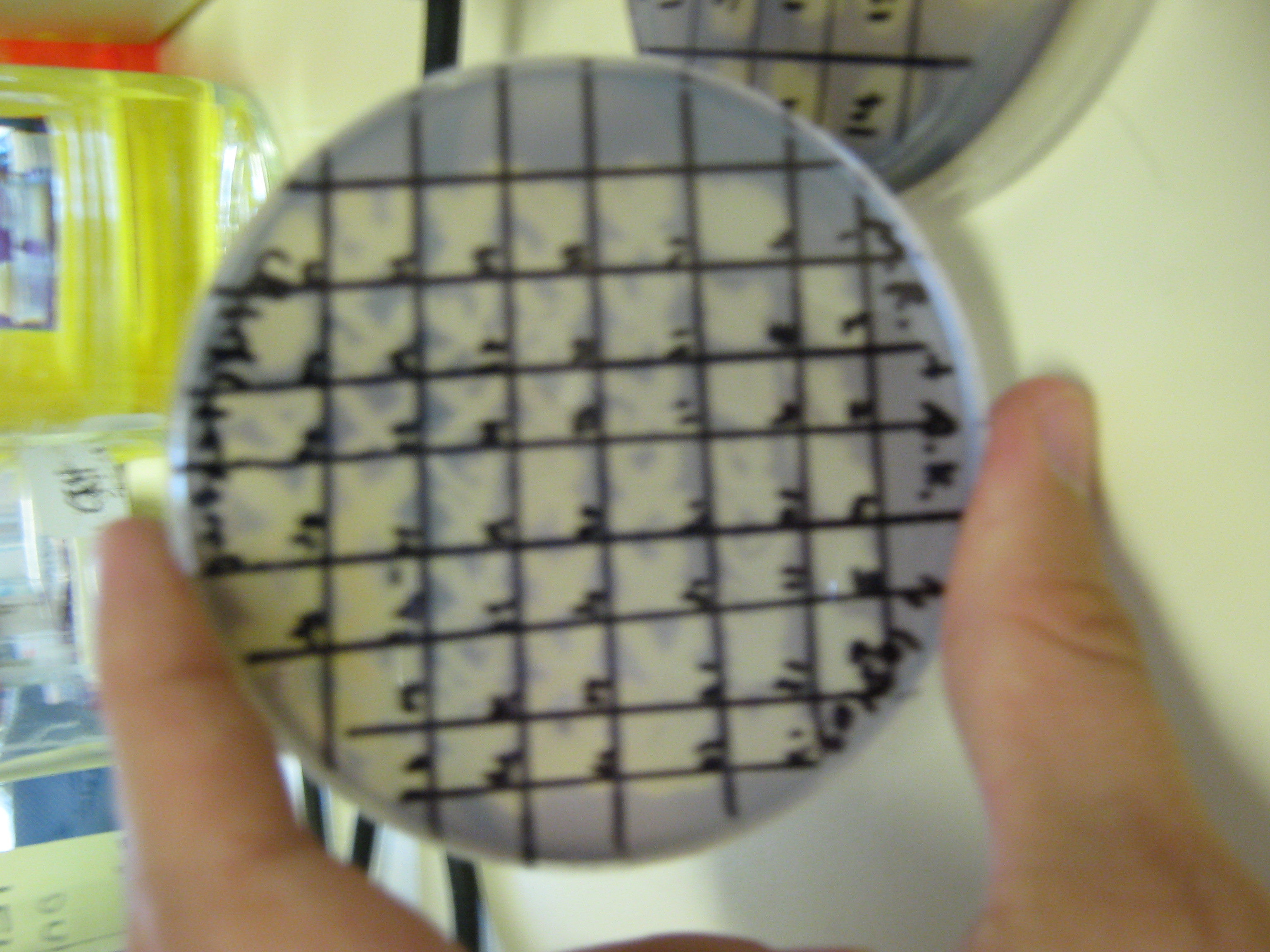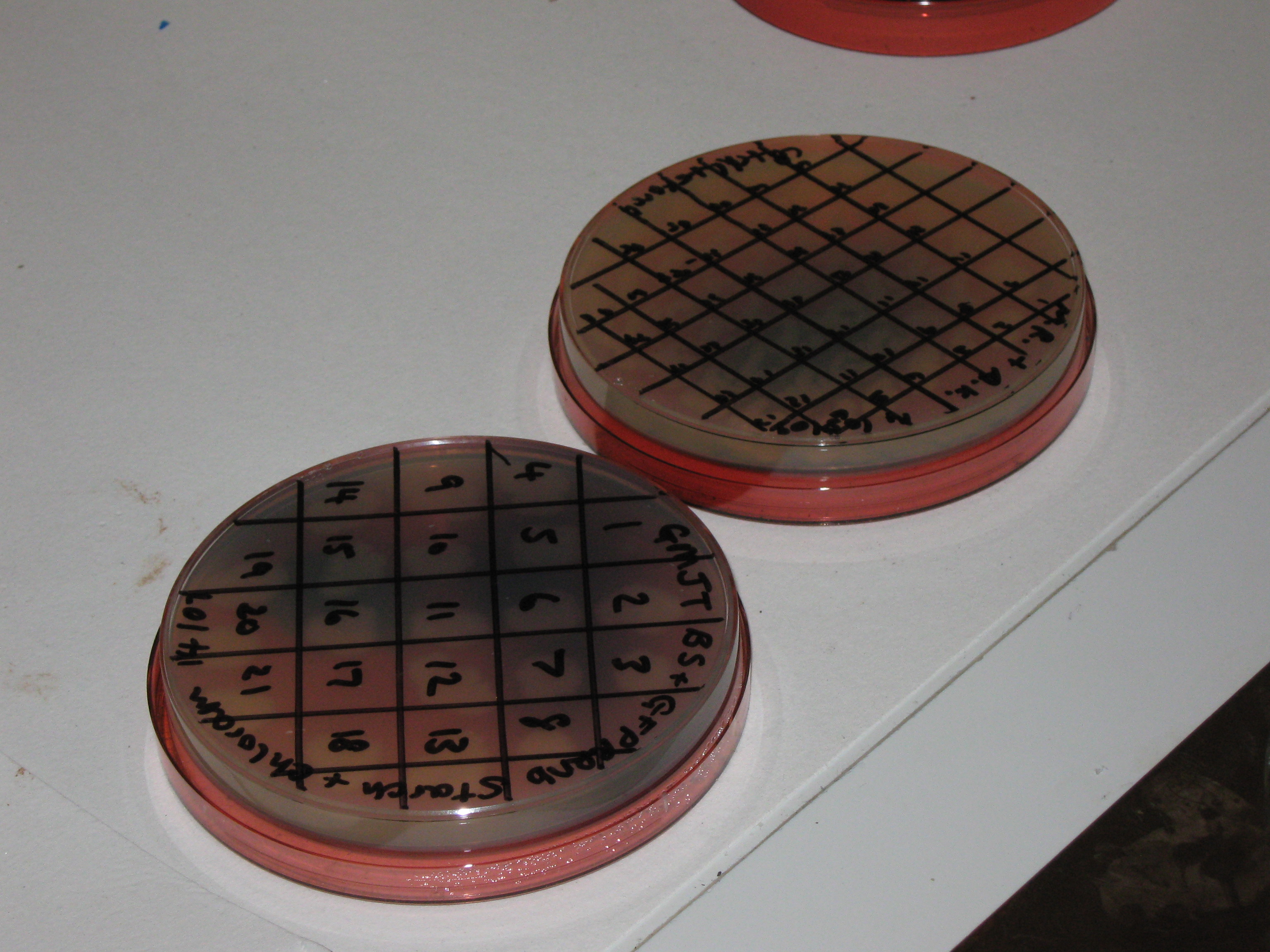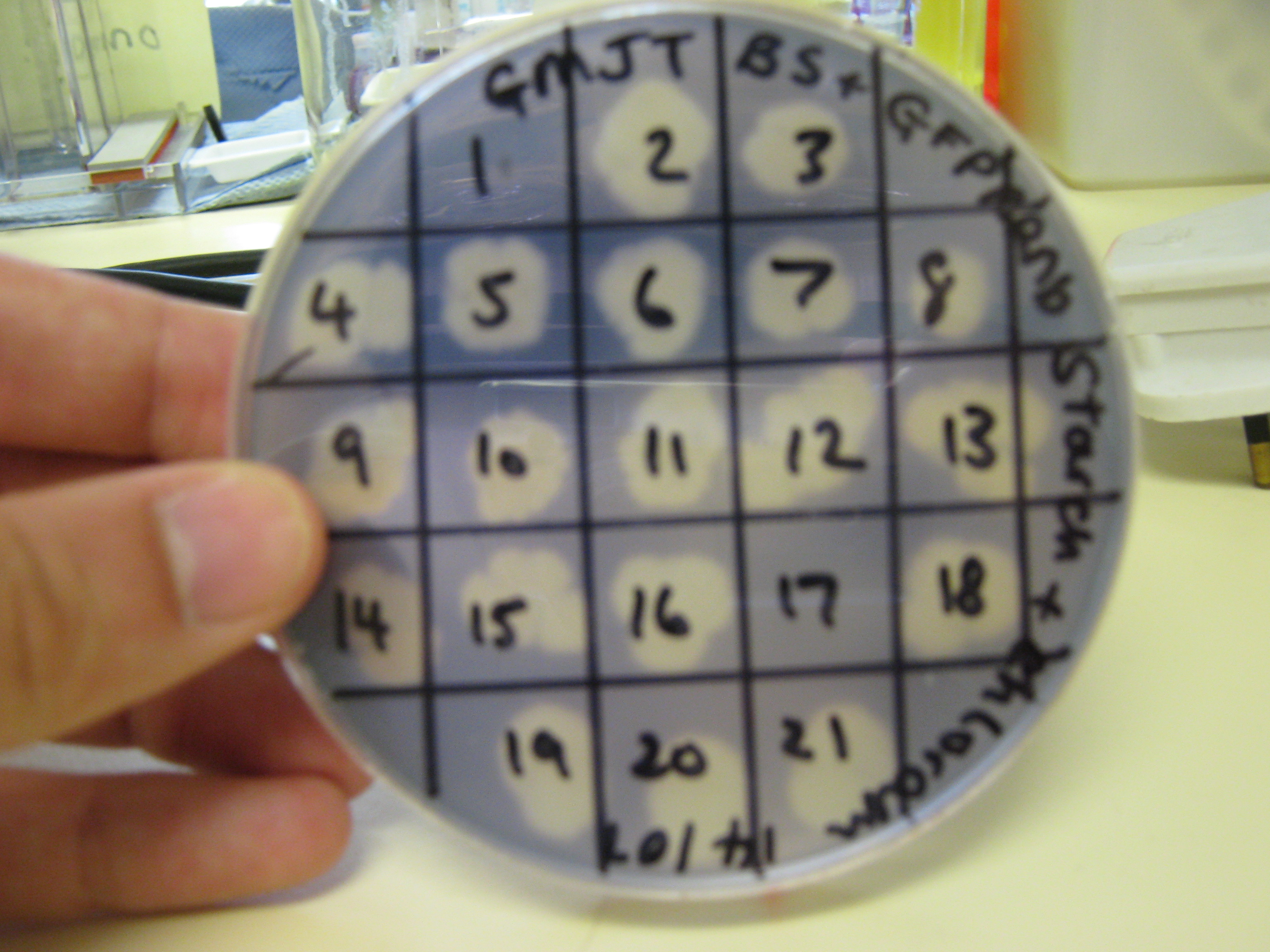Team:Newcastle/Labwork/17 August 2009
From 2009.igem.org
(→Sporulation Tuning/ Chassis Team) |
(→Sporulation Tuning/ Chassis Team) |
||
| Line 40: | Line 40: | ||
==<u>Sporulation Tuning/ Chassis Team</u>== | ==<u>Sporulation Tuning/ Chassis Team</u>== | ||
===Summary=== | ===Summary=== | ||
| - | |||
| - | |||
[[Image:Newcastle 17 August cwlD Jane plates.jpg|thumb|Jane and the plates for the cwlD spores.]] | [[Image:Newcastle 17 August cwlD Jane plates.jpg|thumb|Jane and the plates for the cwlD spores.]] | ||
| - | |||
| - | |||
Today, we plan to repeat the experiment which we did on the [https://2009.igem.org/wiki/index.php?title=Team:Newcastle/Labwork/12_August_2009&action=edit§ion=3 Wednesday,12th of August], which is the recovery of the cwlD spores. | Today, we plan to repeat the experiment which we did on the [https://2009.igem.org/wiki/index.php?title=Team:Newcastle/Labwork/12_August_2009&action=edit§ion=3 Wednesday,12th of August], which is the recovery of the cwlD spores. | ||
| Line 51: | Line 47: | ||
We will carry out the usual treatment of the spores with lysozyme, buffer solution and L-alanine. However, we will also attempt one extra "treatment", which is carrying out the same "treatment", but without the addition of lysozyme. What we are trying to achieve here, is how great an effect lysozyme has on the spores as can been seen in the [https://2009.igem.org/wiki/index.php?title=Team:Newcastle/Labwork/17_August_2009&action=edit§ion=5 results section below]. | We will carry out the usual treatment of the spores with lysozyme, buffer solution and L-alanine. However, we will also attempt one extra "treatment", which is carrying out the same "treatment", but without the addition of lysozyme. What we are trying to achieve here, is how great an effect lysozyme has on the spores as can been seen in the [https://2009.igem.org/wiki/index.php?title=Team:Newcastle/Labwork/17_August_2009&action=edit§ion=5 results section below]. | ||
| + | |||
| + | [[Image:Newcastle 17 August BSub plate for singles.jpg|thumb|The drawn-on sections for the single colonies of the transformations.]] | ||
| + | [[Image:Newcastle 17 August BSub plated singles.jpg|thumb|The plated single colonies.]] | ||
Also, we intend to plate out our transformed [https://2009.igem.org/wiki/index.php?title=Team:Newcastle/Labwork/13_August_2009&action=edit§ion=4 ''Bacillus subtilis''] onto starch plates so that we can carry out the iodine test on it to see if it has truly transformed. The rational and steps to carrying out the iodine test is [https://2009.igem.org/wiki/index.php?title=Team:Newcastle/Labwork/17_August_2009&action=edit§ion=4 explained above by the Metal Sensor Team]. | Also, we intend to plate out our transformed [https://2009.igem.org/wiki/index.php?title=Team:Newcastle/Labwork/13_August_2009&action=edit§ion=4 ''Bacillus subtilis''] onto starch plates so that we can carry out the iodine test on it to see if it has truly transformed. The rational and steps to carrying out the iodine test is [https://2009.igem.org/wiki/index.php?title=Team:Newcastle/Labwork/17_August_2009&action=edit§ion=4 explained above by the Metal Sensor Team]. | ||
Revision as of 19:15, 10 October 2009
Formal Lab Session - 17th August 2009
Metal Sensor Team
Introduction and Summary
In our last lab session (14/08/09) starch agar plates were made and once this task had been completed, Bacillus subtilis was entered onto the plate. This was done by firstly drawing a grid of 46 squares on the base of the agar plate and then marking each square with the bacteria. Into square 1, untransformed wild type Bacillus subtilis was added and into squares 2-46, Bacillus subtilis transformed with gfp-rrnb was added. These plates were then grown overnight.
The reason for this exercise is to see whether the bacteria that have survived the chloramphenicol treatment really have been given this property by taking up gfp-rrnb. If the bacteria can't break down the starch which surrounds them on these plates then they have surely taken up the plasmid vector; if they can break down the starch then they might have received the resistance by other means. It may also mean that the vector may have integrated into another area in the Bacillus's chromosome. Today we shall be adding iodine to the plates so that we can assess whether the transformed B. subtilis can break down starch.
What we did
The overnight plate with the B. subtilis growing on it was removed from the fridge (where it had been stored) and taken to the fume cupboard. This agar plate (with the lid removed) was then placed directly over another plate containing iodine crystals (the lid of this plate was also removed). The surface of the agar plate (containing B. subtilis cultures) was directly facing the iodine crystals so that any iodine vapour would hit the colonies of bacteria and the starch surrounding them.
Observations and Results
- Before the iodine process was carried out it was noted that no colonies grew in square 1. In this square wild type B. subtilis (which has the amyE gene intact) was plated. The reason for no growth was due to it's lack of resistance to chloramphenicol (an antibiotic added to the starch plate). However in the other squares, which contained 'transformed' Bacillus subtilis, there were colonies present as resistance had been inherited.
- After a few seconds of exposure the starch present in the agar plate began to darken and eventually turn black in the presence of iodine vapour. After a minute or so, the whole plate was blackened with iodine vapour.
- When looking at the colonies in squares 2-46 there were no clear halos surrounding them. They were all surrounded by the blackened starch with no clear areas. This meant that the starch had not been broken down around them and therefore the bacteria had lost their ability to break down starch.
Conclusion
After attempting to transform Bacillus subtilis with gfp-rrnb, it appears that the bacteria have successfully taken up the vector plasmid and integrated it into it's own genome (in the correct area, i.e. in the amyE gene). It had been previously shown that the transformants were resistant to chloramphenicol, a property inherited from gfp-rrnb, and today it has been shown that the transformants have lost their ability to break down starch with amylase (a characteristic inherited when the gfp-rrnb plasmid integrates into the B. subtilis's chromosome at the amyE gene).
Stochastic Switch team
This week the stochastic switch team will be rehydrating and transforming bricks from the distribution needed for the very last part of the lab work. The bricks we will be using are fror swapping the tester promoters in our synthesised stochastic construct with inducible promoters that will be linked to the rest of our project's systems.
Summary
Today we rehydrated 7 biobricks for the distribution: R0062; R0079; C0161; C0179; J44000; C0178; C0062. Which code for: LuxR promoter; LasR promoter; LuxI; LasR; HixC; LasI; LuxR respectively.
We rehydrated the bricks and transformed E.coli (DH5alpha) cells however we used the wrong protocol and therefore needed to repeat the transformations on Tuesday 18th. We also tested our Bacillus integrations from last week. In a fume cupboard we exposed our starch plates to iodine vapour. No halos could be seen around the colonies, so it was confirmed that the GFP-rrnb had integrated into the bacillus chromosome at the amyE locus.
Sporulation Tuning/ Chassis Team
Summary
Today, we plan to repeat the experiment which we did on the Wednesday,12th of August, which is the recovery of the cwlD spores.
We plan to follow the protocol for Method A again, however, this time, keeping in mind to add 40ul of our stock lysozyme instead of just 4ul.
We will carry out the usual treatment of the spores with lysozyme, buffer solution and L-alanine. However, we will also attempt one extra "treatment", which is carrying out the same "treatment", but without the addition of lysozyme. What we are trying to achieve here, is how great an effect lysozyme has on the spores as can been seen in the results section below.
Also, we intend to plate out our transformed Bacillus subtilis onto starch plates so that we can carry out the iodine test on it to see if it has truly transformed. The rational and steps to carrying out the iodine test is explained above by the Metal Sensor Team. The only difference is that our team only plated out 21 colonies; Square 1 contained the wild type Bacillus subtilis, which Square 2 to 21 contained the Bacillus subtilis transformed with gfp-rrnb as can be seen in the results section.
Results
Recovery of cwlD Spores
Iodine Test on Transformed Bacillus subtilis with gfp-rrnb
|
|
| ||||||||||||||||||||||||||||||||||||||||||||||||||||||||||||||||||||||||||||||||||||||||||||||||||||||||||||||||||||||||||||||||||||||||||||||
News
Events
- 20 – 21 June 2009 - Europe workshop (London)
- 23 – 24 June 2009 - UK iGEM meetup (Edinburgh)
- 23 October Practice Presentation (Newcastle)
- 23 October T-shirts are ready
- 27 October Practice Presentation (Sunderland)
- 27 October Poster is ready
- 30 October – 2 November 2009 - Jamboree (Boston)
Social Net
 "
"







